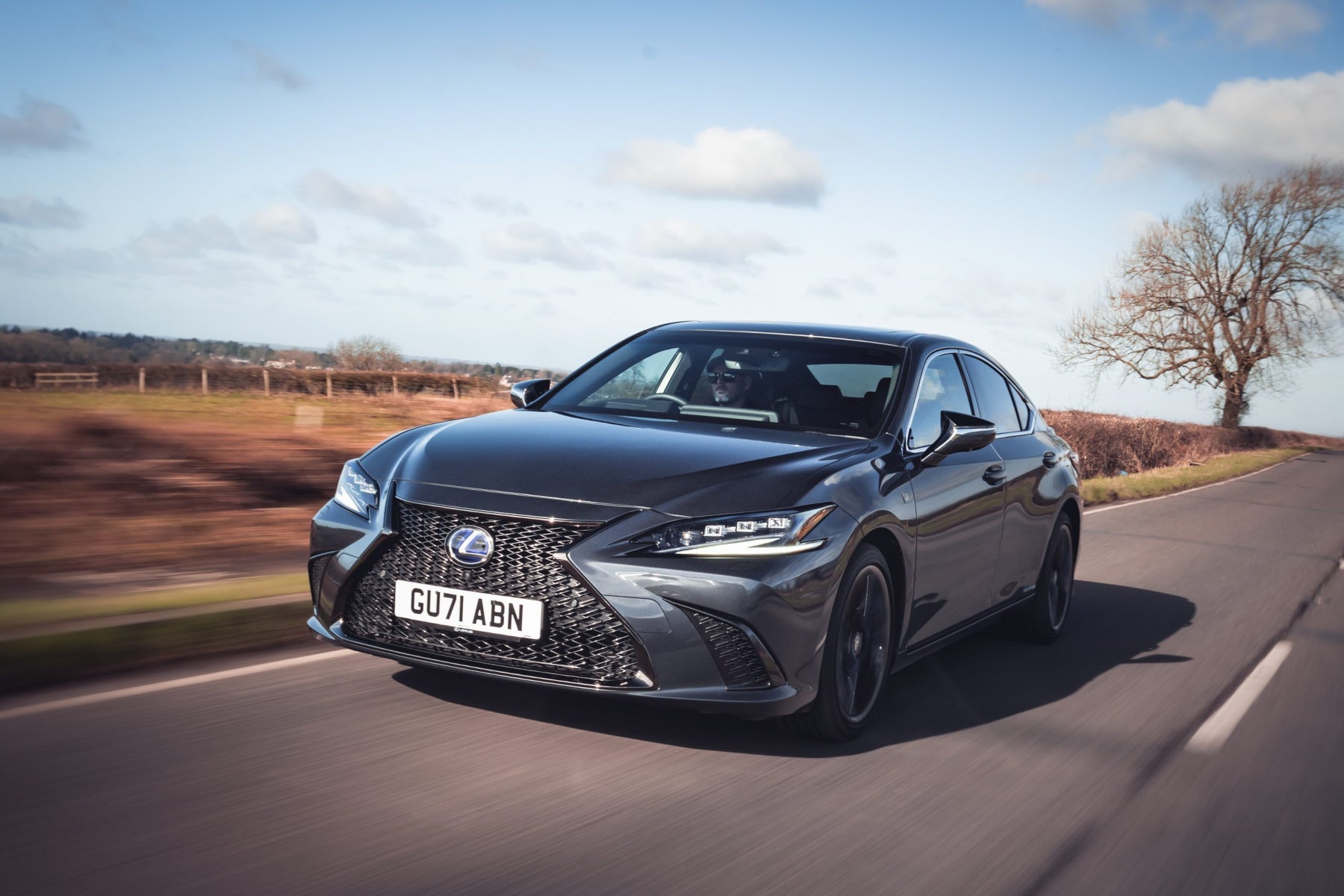Lexus ES Review 2025: Price, specs & boot space
Written by Andrew Brady
Quick overview
Pros
- Vast cabin space
- Excellent quality and improved tech
- Smooth and refined
Cons
- Lacklustre single engine option
- You can't fold down the rear seats
- Doesn't handle like a 5 Series
Verdict: Is the Lexus ES a good car?
"The Lexus ES is the direct replacement for the GS executive saloon. If you think that a mild change of name means any significant change in tack for the firm’s mid-size saloon, then as this review will show you'll be in for a disappointment."
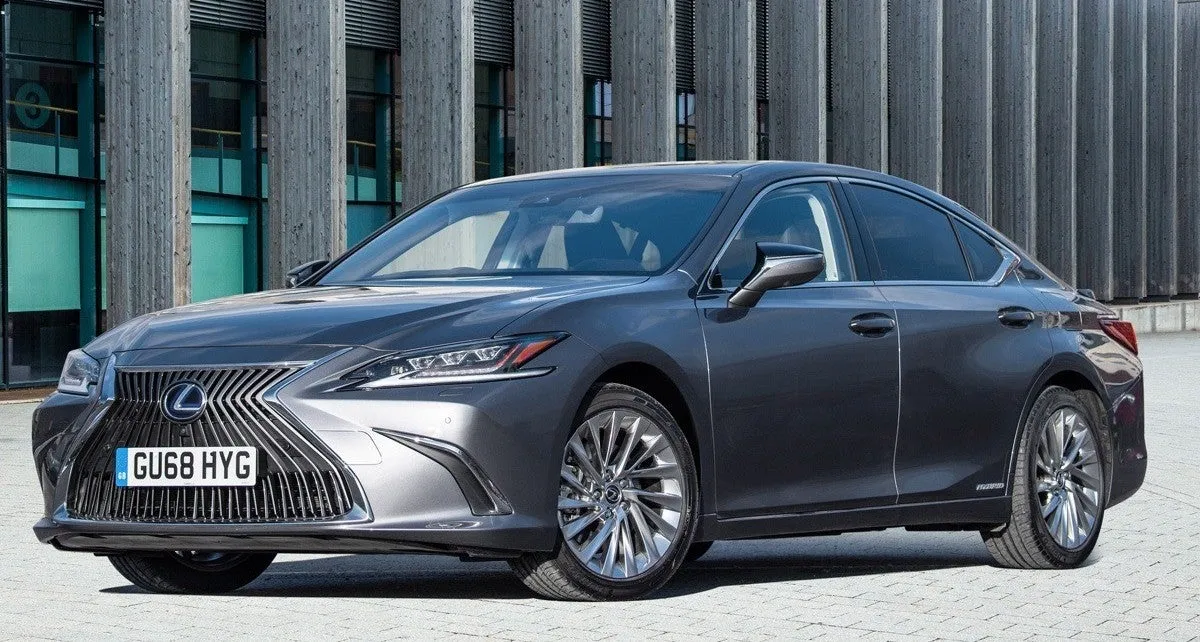
On the other hand, if you liked the Lexus GS, and there was plenty to admire about it, then the Lexus ES offers a lot more of the same. It is a sharper looking saloon than the GS, which slowly evolved to look rather anonymous. The ES has crisper lines and a slightly coupe-esque profile, though it’s certainly not in the mould of the Mercedes CLS.
The rivals for the Lexus ES are the usual suspects from the executive sector, namely the Audi A6, BMW 5 Series, and Mercedes E-Class. There's also the Volvo V60 hybrid and Genesis G80. All of these cars have the added ace up their wheel arches of an estate model (except the G80) for anyone wanting more carrying capacity. This is an area where Lexus has long lagged behind its European counterparts, and the ES remains resolutely only available as a four-door model with boot rather than tailgate.
On the inside, you won’t mind the Lexus ES isn’t an estate as the cabin offers up an impressive amount of room. This is certainly one area where Lexus has listened to critics of the GS and responded in very definite terms. In fact, you could almost accuse the firm of overreacting as the rear seat now serves up almost as much knee room as the LS luxury limousine in Lexus’ range. Still, we’ll take that over the cramped back seat of the GS that went before.
The front of the ES’s cabin is no less generous in the space it offers its occupants. The driver is presented with a very high-tech looking dash, which includes a couple of unusual column stalks poking out of the sides of the main binnacle. They are for the drive modes and traction control and, while they seem a little unusual at first, they are an example of Lexus daring to think differently and come up with a solution that works, even if it appears a little left-field.
For 2021, Lexus added a touchscreen for its infotainment system allowing you to ditch the extremely fiddly trackpad control method. It's still not the best system in its class, but it is at least easier to use on the move.
Left-field thinking also underpins why Lexus has resolutely stuck with hybrid power for its mid-size saloon models for many years now. The petrol-electric set-up for the ES is familiar, but it now drives the front wheels rather than the back pair. Again, this puts the Lexus at odds with conventional thinking for this class of car, but there’s no denying it has upsides such as the huge rear seat space now provided in the ES.
As far as driving goes, the Lexus ES is much the same as the GS in that it is smooth and unflustered in most conditions, but try to exploit its grip or power and its poise begins to unravel all too rapidly. A BMW 5 Series will simply drive away from the Lexus on a twisting road thanks to its superior body control and grip levels. The 2021-on models have had improvements to the overall handling, and it does feel a little more controlled, but it's still not exactly an engaging driving experience. However, on crusty surfaces, the Lexus gets right back on terms with the plushness of its ride.
It's a shame that Lexus doesn't offer more engine choices with the ES, as that would help it compete more closely with the Germans. However, its quality, comfort and refinement blended with the Lexus ES’s low running costs make it an interesting package. Not necessarily a class-leading one, but definitely worthy of consideration.
Looking for a used car for sale? We've got 100s of Lexus Approved Used Cars for Sale for you to choose from, including a wide range of Lexus ES cars for sale.
Is the Lexus ES right for you?
The executive sector is full of cars with sporting touches and muscular appeal in a bid to draw in buyers, yet comfort is a much longer lasting talent to have and this is what the Lexus ES offers. Its supple suspension soaks up lumpy roads and whisks them away with barely any disturbance to its occupants.
For this reason alone the ES is a great car for anyone who has long commutes to complete. It deposits you at journey’s end feeling comfy, relaxed and ready for what comes next.
This calm demeanour is enhanced by the hybrid powertrain’s easy-going nature, while the cabin has masses of space and build quality that makes a bank’s seem a little slapdash. The interior is also packed with lots of standard kit to make your life easier and more cosseted.
Lexus also gets it right when it comes to running costs, which will be of vital importance to the many company car drivers faced with the choice of picking from the Lexus or the multitude of other executive saloons available.
What’s the best Lexus ES model/engine to choose?
You don’t get a choice when it comes to the engine in the Lexus ES as there’s only one and it’s a petrol-electric hybrid. The 2.5-litre four-cylinder petrol unit is spliced with an electric motor to produce a combined 248PS.
Although the performance remains far from thrilling, the ES’s engine combo rewards with smoothness and it pulls away from a standstill using just electric power for a very quiet, smooth start to your journey.
With just one powertrain, your big decision is which trim to choose. There are three to pick from, comprising the base ES Premium, Premium Plus and Takumi.
What other cars are similar to the Lexus ES?
Lined up against the wall as rivals for the Lexus ES are the usual suspects. They are the Audi A6, BMW 5 Series and Mercedes E-Class from Germany. The Jaguar XF was a competitor, but that's since been canned.
The BMW is the one keener drivers will gravitate towards, while the Mercedes appeals for its comfort and elegant cabin. The Audi A6 has a more avant-garde appeal.
Before, the closes rival was the Volvo S90, but only the V60 and V90 exist now. Likewise, there's the Genesis G80, something of left-field approach.
Comfort and design: Lexus ES interior
"In keeping with the Lexus ES’s comfort rather than sporting approach, the driving position is a little more upright than you’ll find in the likes of the BMW 5 Series. It gives superb support and the front seats are deeply cushioned to give an old-fashioned armchair feel, yet there is also sufficient side bolstering to keep you in place during cornering."
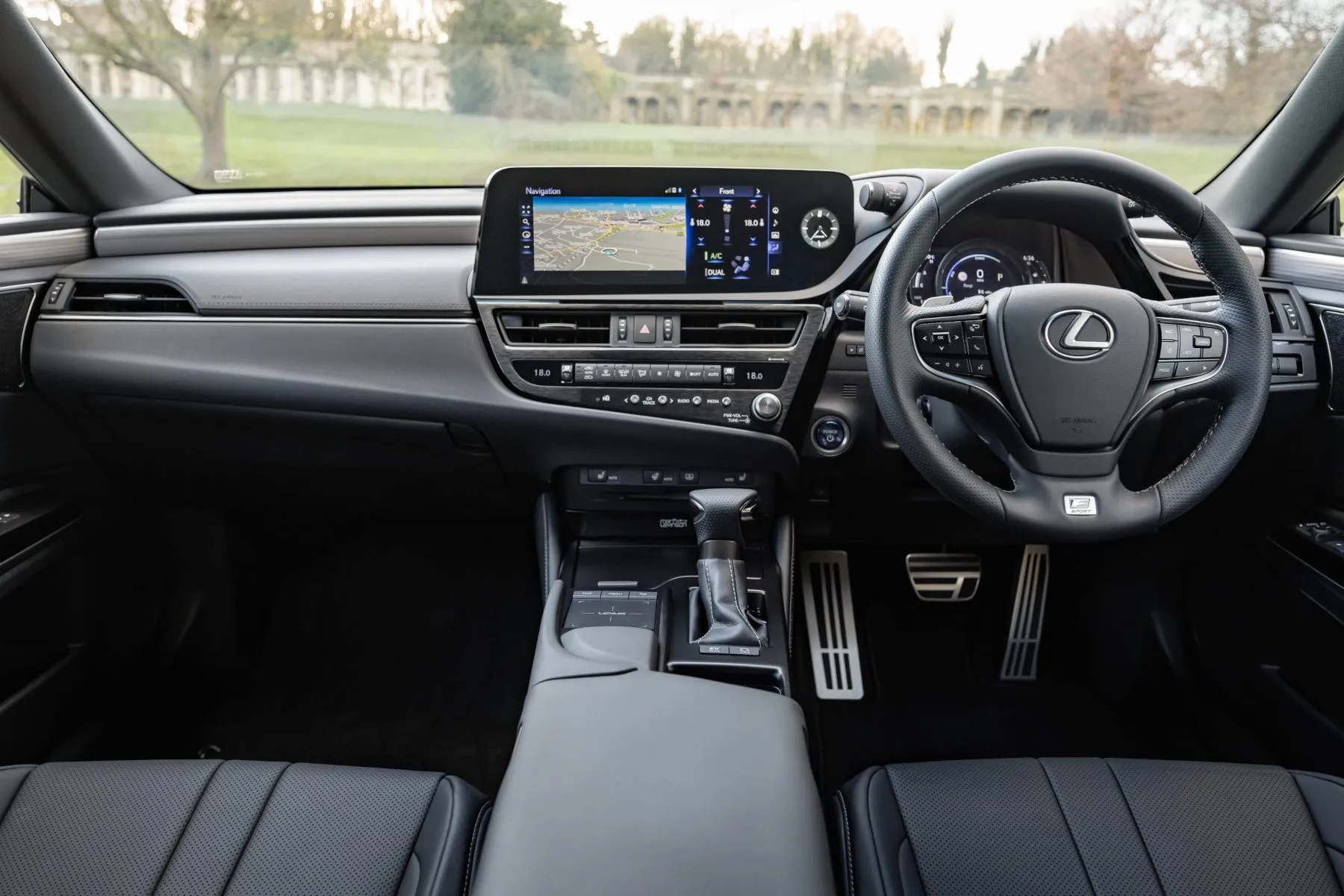
All models come with sculpted and heavily bolstered seats, and the driver's seat is eight-way adjustable. Stepping up to Premium Plus means a 10-way adjustable driver's seat with four-way lumbar support. The range-topper adds ventilated front seats.
There is enough space for the driver’s head and shoulders and a huge range of electric seat adjustments for the shortest or tallest drivers. For anyone in between these two extremes, you will also find it easy to attain the right driving position as the steering wheel also moves for height and angle.
The view from the driver’s seat is good to the front and sides, but the sloping rear pillars restrict vision when changing lanes or pulling out of side streets at an angle.
Looking inside the cockpit, the digital dash display is clear and easy to read, and the controls are clustered in a way that makes them easy to reach. That includes the two unusual-looking rotary controls jutting out of the main binnacle that operate the traction control and driving modes. At first, they seemly strangely positioned, but you soon forget they are there unless you want to alter which mode the car is in when you have instant access.
Lexus hasn't changed the granite-hewn quality or array of old-school buttons (we kind of like that), but it has brought in an improved infotainment system. The menu designs and features aren't massively enhanced, but the screen itself is closer to the driver and is now touch-operated.
Quality and finish
If there is one area where Lexus leads the pack in the executive saloon field, it is this one. The Lexus ES has a peerless sense of quality that is clearly derived from the LS luxury saloon. It imparts an identical sense of calm and faultless construction, which is a pleasing feeling when you’re sitting in the ES.
Everywhere you look, neat little touches are made to the way the materials are finished or mixed to provide just enough contrast to make it easy to pick out the right button or dial. The ES’s instruments’ lighting is even soft, making it feel like a cut above the herd in a sector where high quality is the norm.
The same approach applies to the more fundamental side of the ES, so every surface and joint is millimetrically accurate and consistent. It works in harmony with the precision of all the buttons, though remember that pre-2021 models use a trackpad-style control for the screen that is incredibly fiddly to use on the move.
Infotainment: Touchscreen, USB, sat-nav and stereo in the Lexus ES
The base Lexus ES comes with a 12.3-inch infotainment screen as standard, which was only available in the Premium trim before. The displays have been angled 5 degrees towards the driver.
With the latest update, Lexus has installed the Mark Levinson PurePlay 17-speaker surround sound system on its Takumi. It also features a 265mm subwoofer, a sure thing to please audiophiles.
The graphics aren't the most slick, either, but once up and running, the sat-nav works well, and the actual touch response is pretty crisp. There are also shortcut keys on the dash for various functions, while you can bypass the system and use the standard Apple CarPlay and Android Auto connectivity instead.
The main digital dial display isn't as large as that on some rivals, nor does it have the cool sat-nav graphics of Audi's Virtual Cockpit. But it is configurable to some extent, and the display itself is fine.
Space and practicality: Lexus ES boot space
The Lexus ES banishes the cramped rear accommodation of its predecessor, the GS, in a stroke. Much of this is down to the ES using a front-wheel drive platform, so there is not nearly such a pronounced transmission tunnel. This design has also allowed Lexus to devote a lot more of the car’s considerable length to the passenger area, and means the ES now offers very nearly as much rear legroom as the LS luxury saloon.
A pair of tall adults can sit in imperious comfort in the back of the ES and they will have plenty of room to spare for their heads and elbows too. A third passenger might find it a bit snug, but at least they get a flat base and back to aid comfort. They also get a full three-point belt, while the outer pair of seats comes with Isofix child seat mounts as standard.
Those in the rear of the ES get individual air vents and the Takumi model also boasts heated rear seats, though this is not even an option for the other two models in the ES range.
Getting in and out of the ES’s rear seats is easy thanks to the back doors swinging to almost 90 degrees. Also, the rear bench is a little higher set than many of its rivals, so it’s a shade better for just turning and stepping out of the car rather than having to lever yourself out.
At the rear of the ES, the boot lid has a powered opening and closing either using the buttons on the dash or the key. If you choose the top-level Takumi, you get a boot that can be opened hands-free by waving your foot under the rear bumper.
With the boot open, the luggage compartment is usefully bigger than the old GS’s and offers 454 litres of space. That’s still a way behind the likes of the BMW 5 Series or the Mercedes E-Class, and the ES is further hampered by the shape of its boot as there are structural supports that mean you cannot use the full length of the floor. Another demerit for the ES’s cargo bay is the rear seats do not fold forward, which is a real omission these days.
Exterior dimensions are 4,975mm long, 1,865mm wide and 1,445mm tall.
Handling and ride quality: What is the Lexus ES like to drive?
"Any executive saloon buyer looking for a bit of excitement in their daily drive will feel a little let down by the Lexus ES. This is not a car for scything along country roads or making fast progress in round the ring road on your way to a vital sales meeting. Lexus is happy to leave that to others as the ES makes no bones about being an upmarket saloon with comfort on its mind."
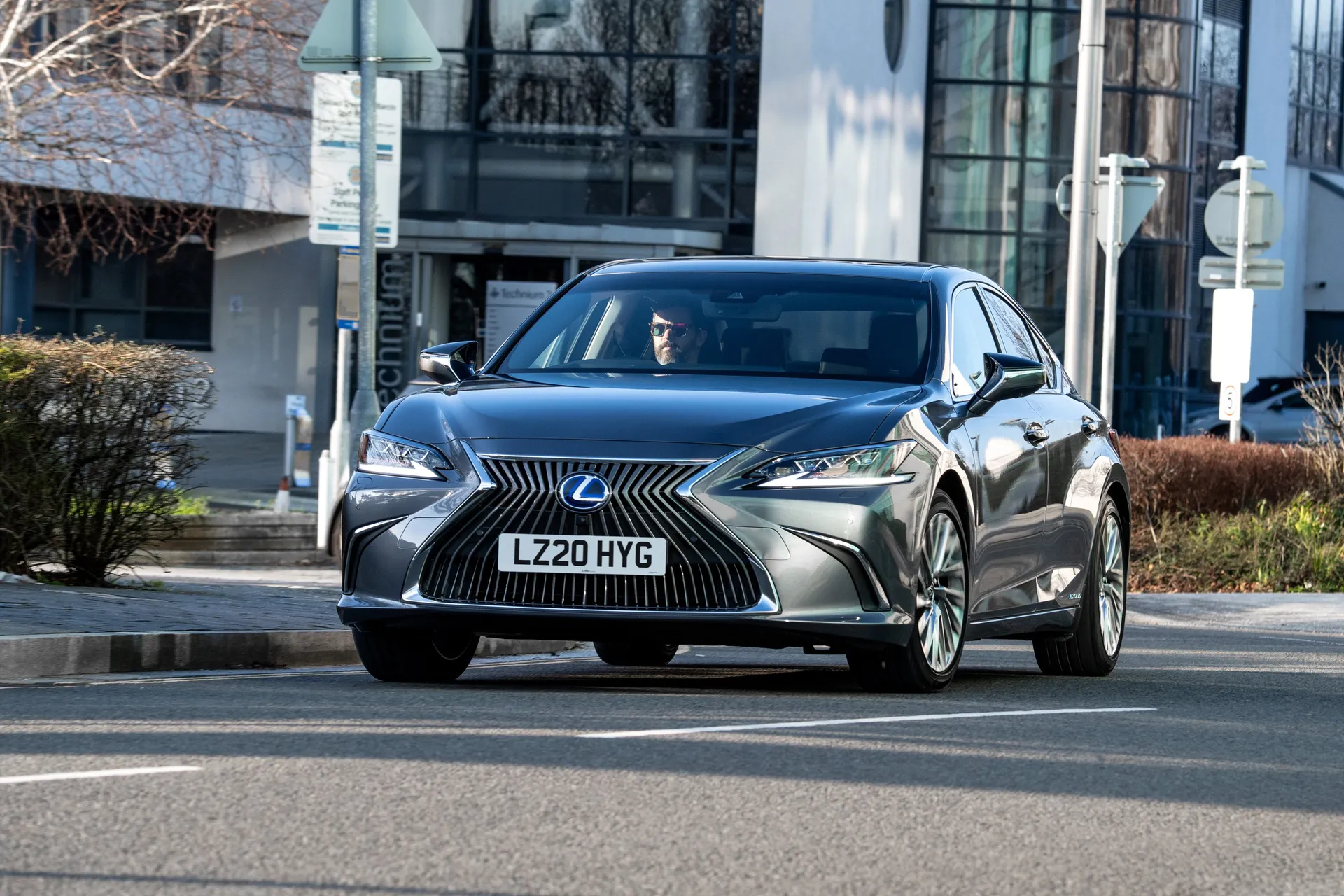
The comfort bias of the Lexus ES is still apparent, with alterations of the suspension aimed at making it feel a bit more tied down in the bends. While it is perhaps a touch more controlled and responsive, it's still no back-road blaster, thanks to the limitations of its front-wheel drive chassis and soft setup.
With this understood, the ES makes a much more appealing prospect in this class as it's great at smoothing out motorway expansion joints and the usual A-road ruffles. The 19-inch alloy option was dropped in favour of comfortable 18-inch ones.
Still, even if the ES is not the be-all and end-all of driving pleasure, it can be pushed on through bends with confidence as there is plenty of grip.
On the other hand, the ES is a doddle to park and meanders through town in a thoroughly refined, relaxed manner. The hybrid system plays well to that with its lack of physical gears and low-speed electric-only running, making for super-smooth progress.
What engines and gearboxes are available on the Lexus ES?
The Lexus ES comes with one engine and gearbox combo, and that’s your lot. It's a pairing that suits the relaxed, refined driving experience.
The 2.5-litre four-cylinder non-turbo petrol engine, which produced 178PS, now delivers more power. However, this is still fed through the front wheels, unlike its German rivals.
Still, it's a heavy car, and although an equivalent BMW 520i delivers less power, the Lexus is still slower on paper.
Pulling away from a standstill, the ES is very smooth, but on the move, its responses are dulled by the use of a CVT (continuously variable transmission) rather than the slick eight- or nine-speed automatics commonly found in the competition.
You can select a Sport mode and use the steering wheel paddle shifters to give the impression of separate gears and to slightly liven up the ES’s reactions, but it doesn’t make the car any quicker to react in reality.
Prolonged stamping on the throttle only makes the gearbox pin the revs right up near the maximum for sustained periods, which spoils the otherwise excellent refinement with a rather coarse four-cylinder note. So, it’s much better to accept the ES’s limitations and enjoy the smoothness of the hybrid system and the way it will propel the Lexus along a motorway in an unruffled, almost silent manner.
Refinement and noise levels
Lexus has taken the superb refinement of the previous GS model and used it as a springboard to make the ES even more hushed.
In both the standard and Takumi models, road noise is all but absent from the cabin, while the 2.5-litre petrol engine is usually a distant hum. Only when you demand the most from acceleration does the engine make itself heard with soaring revs, thanks to the quirks of a CVT transmission, and it's not an especially pleasant sound in the context of rivals that can be had with smooth six-cylinder diesels, for example.
Pulling away from a standstill under a modest throttle will keep the ES in electric mode for short periods, which helps keep the noise down, too.
The sleek shape of the ES does a very good job of slicing through the air and keeps buffeting noises on the outside, even at higher motorway speeds. On top of this, all of the controls work with a satisfyingly positive, crafted action that speaks of great refinement.
Safety equipment: How safe is the Lexus ES?
Choose a Lexus ES, and you'll get one of the safest cars in its class. It comes with a full five-star safety rating from Euro NCAP, with high scores across the board for adult and child occupant and vulnerable road user protection.
In addition, every ES comes with autonomous emergency braking, which Lexus calls a Pre-Collision System that detects possible hazards ahead. If the driver doesn’t react, the system performs an emergency stop without the driver’s input. There's also the Lexus Safety System +, which includes emergency steering assist. The radar and camera have also been improved, it now detects cyclists during daylight hours and pedestrians in poor light conditions.
Lexus also fits every ES with Automatic High Beam to prevent the automatic headlights from dazzling oncoming drivers by adjusting the spread of light. There is also Dynamic Radar Cruise Control to maintain a safe distance to the vehicle in front even as its speed varies, while Lane Tracing Assist keeps the ES between the correct road markings.
All ES models have a tyre pressure monitoring system, road sign recognition to alert the driver of speed limits, and hill start assist. The Takumi model comes with a Blind Spot Monitor and Rear Cross-Traffic Alert and Braking. Of course, there are Isofix child seat mounts on the two outer rear chairs on all models.
MPG and fuel costs: What does a Lexus ES cost to run?
"The Lexus ES delivers diesel-like economy for the most part, and excels in town thanks to its hybrid system."
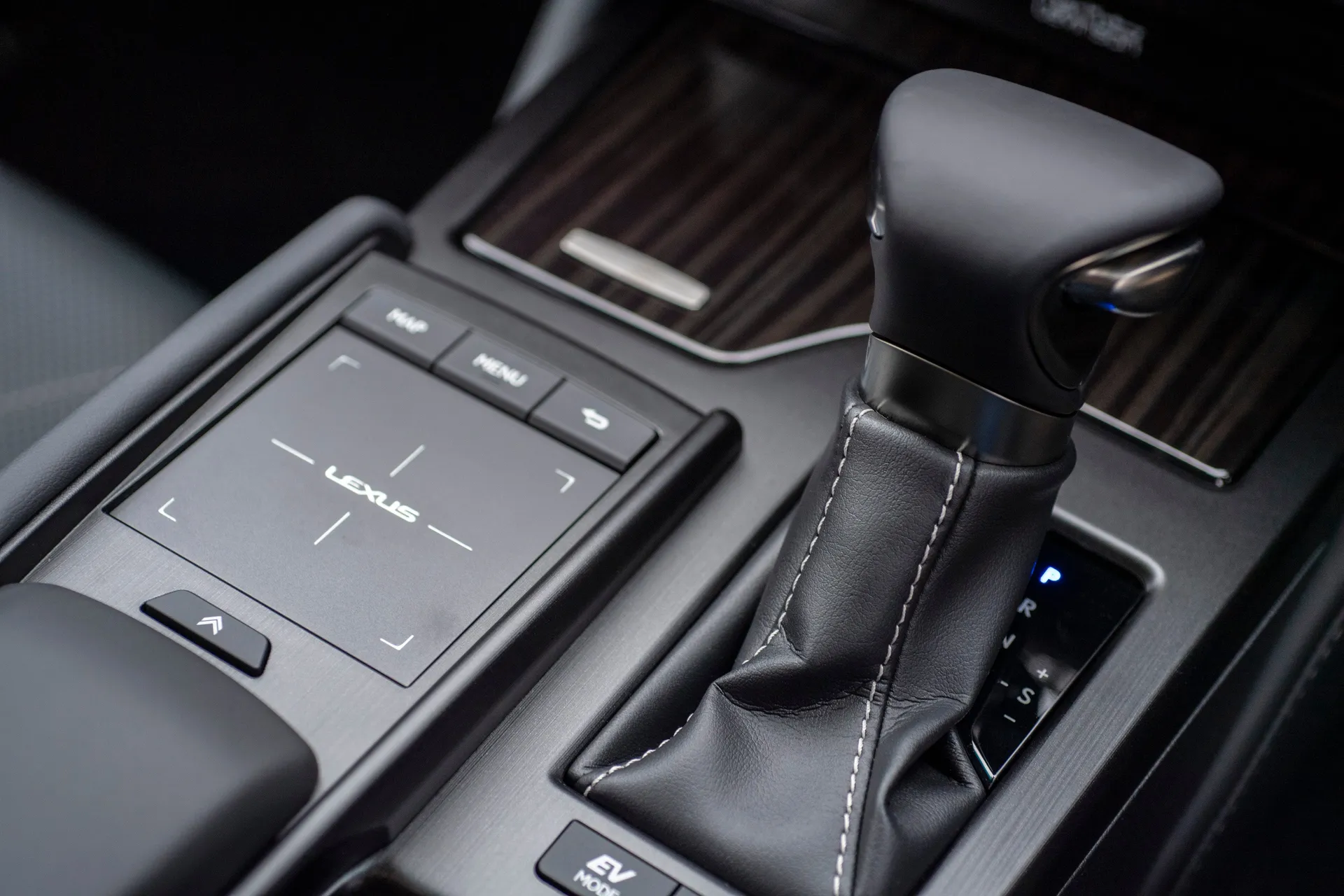
The Lexus ES records a best combined economy of 53.2mpg under WLTP tests, which puts this hybrid saloon on par with its diesel-fuelled rivals.
Looking at Real MPG figures, the ES has notched up an average economy of 55.0mpg, which is impressive for a car with a 2.5-litre petrol engine.
What's most impressive is that the ES delivers similar economy regardless of the driving situation. Around town, for example, its ability to regenerate energy and put it into the battery in stop-start traffic helps keep you in electric mode, reducing consumption.
Lexus ES reliability and warranty
Lexus traditionally excels when it comes to build quality, reliability and longevity. We've no reason to believe the ES won't be just as good as older models, which consistently finish at or near the top of owner satisfaction surveys ahead of more popular German equivalents.
Lexus is the most reliable brand for the fifth year running, according to the latest Honest John satisfaction index. In came second out of 33 manufacturers for owner satisfaction.
Lexus ES insurance groups and costs
The latest trim levels (Premium, Premium Plus and Takumi) are all fairly close regarding insurance groups. The Premium is group 35, the Premium Plus is group 39, and the Takumi is group 38.
VED car tax: What is the annual road tax on a Lexus ES?
With all trims sharing the same engine, the C02 output is similar throughout. Put simply, road tax will be similar too. Premium, Premium Plus, and Takumi cars fall under band G, meaning the first year tax costs £220 before defaulting to the standard rate (£195).
It's worth noting that cars costing more than £40,000 are liable for premium car tax.
Lexus ES price
"There are plenty of older used examples around, but if a new car is important, expect to pay a bit more than the previous model."
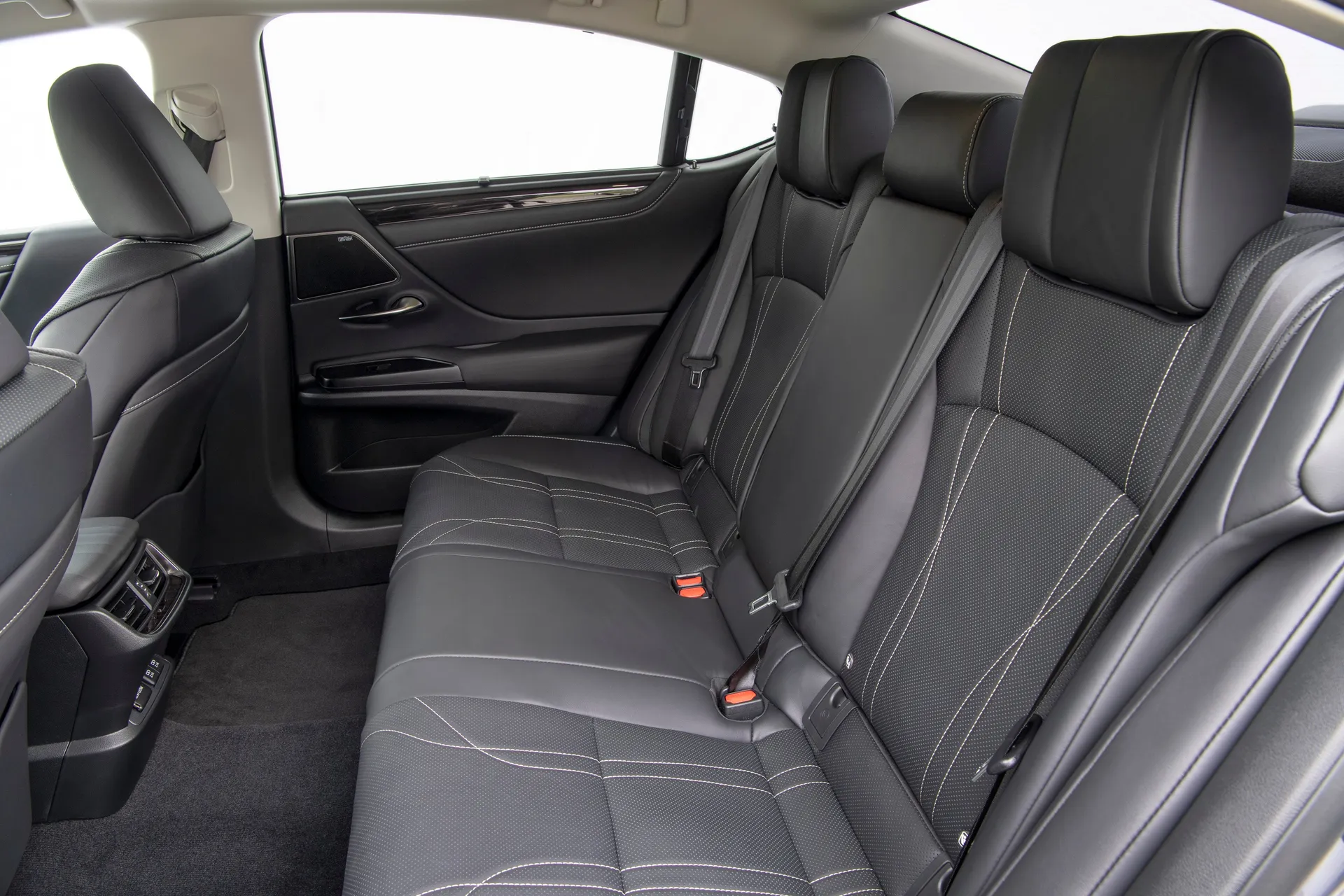
The ES Premium kicks off the range at £43,595, the Premium's next at £48,495, and finally, the Takumi costs £56,895.
Trim levels and standard equipment
Like previous Lexus ES models, there's lots to boot in the new range. The Premium gets Automatic High Beam, an eight-way adjustable driver's seat, parking assist, auto-levelling headlights, electrically folding door mirrors, and Bi-LED headlights.
Opt for the Premium Plus, and you'll get multi-weather lights, a 360-degree monitor, stainless steel scuff plates, ventilated front seats with a memory function, 10-way adjustable driver's seat, Lexus Climate Concierge, and rear sunshades.
The range-topper adds a card key, 4-way lumbar support, heated rear seats, hands-free boot opening, electrically reclining rear seat backrests, and a heads-up display.
Ask the heycar experts: common questions
Is the Lexus ES a good car?
What does ES stand for with the Lexus ES?
Is the Lexus ES the same as a Toyota Camry?
Get our latest advice, news and offers
Keep me updated by email with the latest advice, news and offers from heycar.
By submitting you agree to our privacy policy
